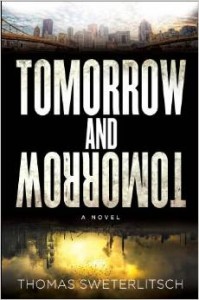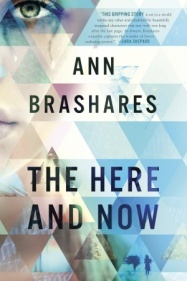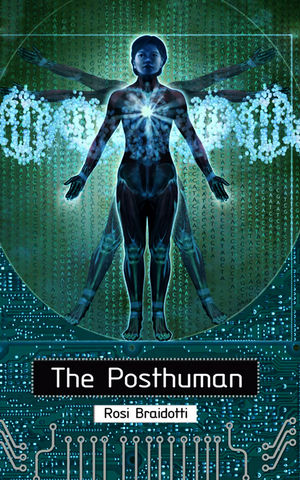Consider this fact: 70% of Americans are on at least one prescription drug, and more than half are on at least two prescription medications. Most common: antibiotics, antidepressants and painkillers. The need for medication isn’t likely to disappear anytime soon, but a skeptical look at this dependency – especially for antidepressants — should be undertaken with regularity. Should some of those patients take greater responsibility for their spiritual health? There’s little opposition to the opinion that physical exercise is essential for human health. But would more exercise alone help the depressed, disillusioned, despair-filled as well as the listless, moody or uninspired?
Most people are destined to spend some time wandering through spiritual deserts, whether through sadness, loss or chronic disaffection. Whether Prozac can be helpful in these situations is debatable (which is not to argue against a biochemical basis for severe depression), but a prescription alone is unlikely to weaken the hold of spiritual distress.
It’s a troubled landscape that Lynn Underwood’s book visits, wielding an experimentally investigated survey instrument, the Daily Spiritual Experience Scale (DSES). Using a combination of intuition, consultation with religious and spiritual leaders and personal experience, the DSES includes questions such as “I am spiritually touched by the beauty of creation,” “I experience a connection to all of life,” “How close to you feel to God / the divine” and “I feel a selfless caring for others.”
Most will find Underwood’s Spiritual Connection in Daily Life to be a trusted guide, offering a quiet thought or a gentle hand — acknowledging the many ways this journey can be taken. Instead of the light BizSpeak style of a Steven Covey Seven Habits text or Gary Chapman’s 5 Love Languages, Underwood tackles the double challenge of writing for a general audience while offering as many evidence-based suggestions as the research will allow. Unlike many texts in this genre, Spiritual Connection offers a substantial bibliography that’s fully linked to references in the text. To the extent that these publications aren’t behind paywalls – a lamentable obstacle – readers should accept the author’s invitation to at least read the abstracts.
What about the existing psychological research? Is it thorough enough? Does it adequately address the different channels, vectors, language, contexts on which human emotions can operate? Perhaps not, but the blame for this lies far beyond Ms. Underwood or the limitations of this book.
The U.S. is a pro forma religious society – in which many Americans declare themselves religious but are not deeply engaged with religious institutions. Secular concerns dominate, and that dominance is rarely contested. There’s plenty of room for practical spiritual advice to counter this, but those voices are less often heard, sometimes for good reason. The opinions can seem irrelevant, steeped in dogma or seeded with Pollyanna platitudes.
Spiritual Connection works hard to engage readers with a conversational style and frequent invitations to write out responses. Can this work? Or are readers too passive, too disengaged with their inner dialoguist?
A strength of the book is its diligent attempt to bridge the gap between atheists, agnostics, deists, believers from the Abrahamic religions, Buddhists – and more – by quoting from practitioners, specialists, monks and especially poets.
This latter emphasis on poetry is clear early in the text. She quotes Christian Wiman, editor at Poetry:
“It is as if each of us were always hearing some strange, complicated music in the background of our lives, music which, so long as it remains in the background, is not simply distracting but manifestly unpleasant, because it demands the attention we are giving to other things.”
Later, seeking to revive readers’ sense of the transcendent in the “beauty of creation,” she quotes Seamus Heaney in “Postscript”:
You are neither here nor there,
A hurry through which known and strange things
pass
As big soft buffetings come at the car sideways
And catch the heart off guard and blow it open.
When speaking of the longing for closeness, she quotes Stevie Smith:
There is a God in whom I do not believe
Yet to this God my love stretches.
To introduce a section on mercy, she quotes the Bard’s Merchant of Venice:
The quality of mercy is not strain’d,
It droppeth as the gentle rain from heaven
Upon the place beneath. It is twice blest:
It blesseth him that gives and him that takes.
When considering how to find a balance between acceptance and engagement, she reminds us of Wendell Berry’s “A Spiritual Journey,” “a journey of one inch / very arduous and humbling and joyful.”
Ms. Underwood shares experiences from her own life to strengthen the importance of these issues. She writes of meeting a Hindu physician, of a conference in Greece held to consider the nature of the human person, of memorable pop songs (Supertramp’s “Even in the Quietest Moments,” Nina Simone’s “In the Morning”), of her prior work as a cancer researcher, of her years in Belfast, and her feelings for her daughters. These anecdotes are minor asides modestly woven into the ideas of others. In one infrequent stretch, she writes: “In my own life I often block love coming in, restraining its power. One reason is that I don’t trust – other people, God. Another is that I do not want to see myself as needing this love.”
One hungers for even more of the personal from the author – that she had accepted the risk of an excessively idiosyncratic spirituality.
This book should not be read in a single sitting. To write on this topic, any writer encounters the Too Many Sweets problem. Just as with a diet of only sweet desserts, too much spiritual instruction can saturate the senses — a small problem easily remedied by a few minutes’ exposure to one of the omnipresent US crime dramas – real life or otherwise.
Return from a journey back to that grim storytelling genre. Read one of the many passages on attention in Spiritual Connection. Do it, for instance, by responding to what Underwood calls the “tradition of apophatic theology that urges that it is in knowing what God is not that we can best come close to God or in union with the divine.” Embrace secular instincts as clues of the transcendent life strewn about in the landscape. Consider them through the lens of sixteen questions.
“Return to the freshness of your experience,” she writes. Discover “generativity” in “the little bursts of brilliance in daily life.” This book holds many such little bursts.
Lynn Underwood is my cousin.
Mark Underwood writes about knowledge engineering, Big Data security and privacy as @knowlengr and about music and literature as @darkviolin. Also on LinkedIn.







